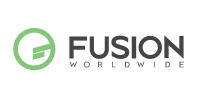Automotive supply chains are highly complex and dynamic ecosystems that necessitate continually adapting to market developments, technology trends, and external pressures ranging from high inflation to consumer activity to geopolitical events. The rise of electric vehicles (EVs) requires new parts and materials; autonomous driving incorporates advanced sensors, communication systems, and computing; and increased demand for SUVs has forced companies to change how they source raw materials and produce vehicles.
In 2023, companies had to navigate the ebbs and flows of an electronic component supply chain that looked very different from the one they were dealing with just one year prior. As they moved out of the global chip shortage era, procurement departments were left with hangovers that took the form of inflated inventories and fluctuating demand. The automotive sector, which dealt with persistent product unavailability and lengthy lead time issues in 2021 and 2022, is now wondering just how the trends of the past 12 months will influence the market in 2024.
Out of Time
The past three years have presented a wide array of trials and tribulations for the automotive industry. An unexpected rise in demand collided with a lengthy pause in manufacturing, which was further exacerbated by disruptions from weather events and a constrained supply of raw materials. Manufacturers tried to catch up to demand once production resumed, but the shortages showed no signs of slowing down, and just-in-time manufacturing was effectively “out of time.”
After this prolonged period of shortages and extensive lead times, original equipment and contract manufacturers hoped that 2023 would continue to have strong demand but allow some time for production around the world to catch its collective breath. While components like automotive microcontrollers (MCUs) still saw constraints and were often subject to allocation, the year did come with better order visibility as availability improved with overall supply levels reaching an equilibrium with demand.
Even as prices fluctuated, these trends were more in line with what the industry and manufacturers were used to navigating.
What Goes Up Must Come Down
According to some of the corporate earnings calls and industry reports published in late-2023, manufacturers and major players in the electronic components industry were already discussing the potential shifts taking hold in the industry as the year winds down.
The supply chain has begun to see a rise in inventory levels for components whose availability was once constrained. In recent earnings calls, auto manufacturers stated that customers in Europe—where many OEM manufacturers are based—are beginning to employ stricter inventory levels because of mounting excess. This could indicate that manufacturers are seeing demand trends change.
Some other key points mentioned on recent earnings calls, include:
- TSMC noted that automotive revenue decreased by 24% due to customer’s entering an inventory adjustment mode.
- Flex Ltd. maintained a cautious stance on automotive forecasts due to uncertainty around year end developments.
- Silicon carbide (SiC) projects, which have numerous automotive applications, were top of mind for onsemi and Wolfspeed. Onsemi targets a 25% market share by year-end, while Wolfspeed became the only pure-play vertically integrated SiC company.
- United Microelectronics Co. highlighted concerns of a higher-than expected inventory buildup in automotive, which lead to forecasted declines in Q4.
- NXP recorded year-over-year growth in automotive revenue but expects results to be flat moving from Q3 into Q4.
On a broader scale, companies like Teradyne have stated that channel inventory constraints have been largely alleviated. While Lattice and MPS are both forecasting that the automotive industry may be in for softening demand heading into 2024, there are pockets of specific segments that will drive long-term growth. For example, EVs and SiC will continue to contribute to both innovation and demand for the electronic components industry. Optimistic forecasts hope to see these segments offset any weakness recorded in traditional automotive segments.
About Fusion Worldwide
Fusion Worldwide is the preeminent open market distributor of electronic components and products. We source, inspect, test, and deliver a broad range of components to a large and diversified customer base that includes OEMs, CMs and ODMs across a wide array of verticals. Founded in 2001, Fusion is headquartered in Portsmouth, New Hampshire and maintains offices and quality centers in major manufacturing centers around the world.
For more information visit fusionww.com, or follow Fusion Worldwide on LinkedIn, Meta, Instagram, WeChat, and X.







